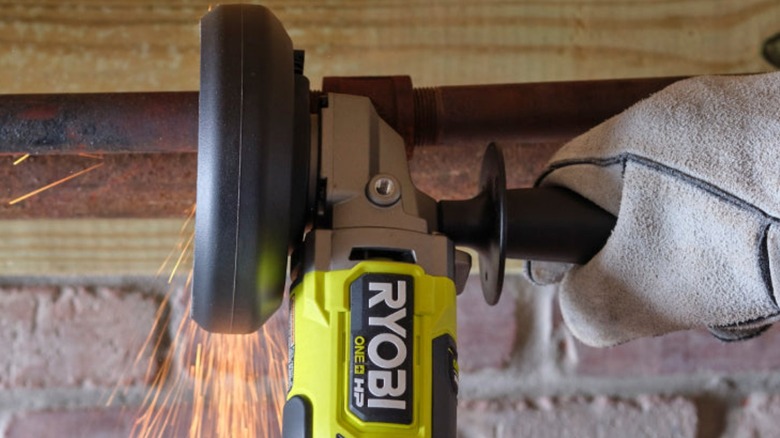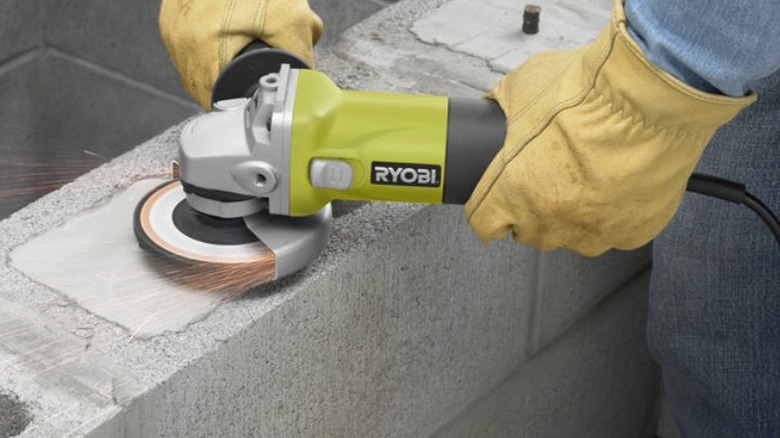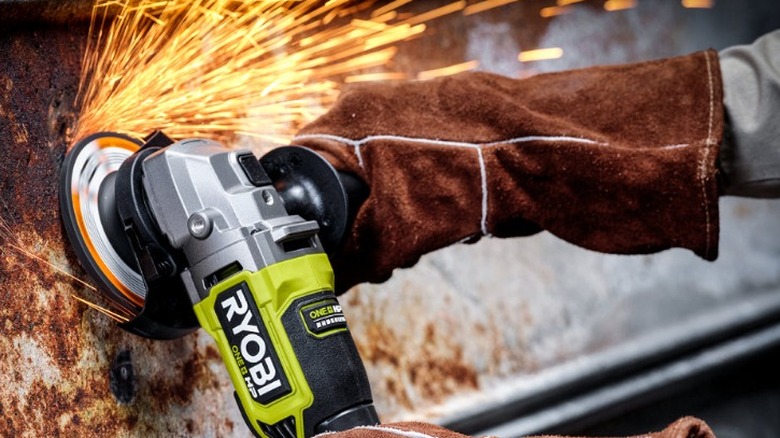Are Ryobi Angle Grinders Any Good? (According To Reviews)
We may receive a commission on purchases made from links.
A quality angle grinder is a great tool to have in your garage any time you have something that needs cutting, grinding, sanding, or polishing. These uniquely designed rotary tools are able to use a whole host of different attachable blades, pads, and other accessories, giving them a wide range of utility. Not only are they incredibly versatile in respect to the range of types of jobs that they can do, but they work with all kinds of materials–from wood and stone to metal and fiberglass. So, you'll want to make sure that you choose an angle grinder from a reputable brand.
The historically Home Depot-affiliated manufacturer, Ryobi, makes a few different angle grinder models, including both corded and battery-powered versions. The green and black brand is best known for offering products with a high-value price-to-performance ratio when compared to other major power tool brands. This makes its tools an attractive option for budget-minded consumers and working professionals alike. That said, many craftspeople use their angle grinder quite frequently, and so it's important to make sure you get a good one. Those who are considering picking up one of these tools might want to learn a bit more about the different models that are available, the specs and features that they offer, and what customers and professional reviewers think about them before committing to a purchase.
Ryobi's corded angle grinders
There are three different corded angle grinder models available in Ryobi's current lineup. The smallest and most affordable is the 5.5 Amp Corded 4 ½-inch Angle Grinder, which retails for $49.00. This tool can generate speeds up to 11,000 RPM. It has a customer rating of 4.8 out of 5 on Ryobi's website, 4.2 out of 5 on Amazon, and 4.4 out of 5 on Home Depot. Users generally found it functional and of reasonably good quality for the price, but there were some reports stating that the tool was underpowered, that it isn't compatible with a range of attachments, and that the thumb switch was stiff and difficult to operate.
The 7.5 Amp 4 ½-inch Angle Grinder represents the mid-range option. This tool MSRPs at $69.00 and also produces a maximum speed of up to 11,000 RPM. It has nearly identical customer ratings to its smaller-engined sibling, with a 4.8 on Ryobi, a 4.2 on Amazon, and a 4.3 on Home Depot. Customers praised its build quality, ease of use, and handle design, but many of them still wished that it offered a bit more power. "I actually love this concept, it helps with wrist fatigue, but it needs to be more powerful," said one reviewer.
Finally, there's the 10 Amp 7-inch Angle Grinder at $79.97. In spite of its larger size, this unit actually operates at a lower speed, with a max of 6,500 RPM. It only has a single review on Ryobi's website, but it has a 4.8 on Amazon and a 4.1 on Home Depot. Reviewers generally seem pleased with it, but there were some complaints about this model being underpowered for its size and weight.
Ryobi's battery-powered angle grinders
Ryobi sells a couple of battery-powered grinders as well. They're offered in kits or as solo tools with slightly different designations, but these essentially boil down to two models.
The more affordable option is the basic 18V One+ 4 ½-inch Angle Grinder, which goes for $59.97 for the bare tool. This has a three position control, and its motor is able to generate speeds up to 9,000 RPM. The tool has a 4.8 on Ryobi's website, a 4.4 on Amazon, and a 4.7 on Home Depot. Customers liked it's basic functionality, ease of use, and value, but there were a few who were expressed frustrations that it drained batteries very quickly.
That issue seems to be directly addressed in the other battery-powered model–the $129.00 18V One+ HP Brushless 4 ½-inch Angle Grinder. Brushless motors generate less heat via internal friction and typically expand both battery efficient and tool performance. Additionally, one of the key differences between Ryobi's One+ and One+ HP tools it that the HP models have smart communication technology built in that allows them to communicate with the batteries for even more enhanced performance. The tool is the same size and generates the same 9,000 RPM max speed, but it's able to generate up to 210 cuts on a single charge. It has a 4.6 on Ryobi, a 4.5 on Amazon, and a 4.6 on Home Depot. "The angled grip and traditional flange nut contribute to the overall usability of this tool, and the paddle switch trigger makes it very approachable for beginners," says Pro Tool Reviews. "It's a great fit for lighter jobs and tight spaces when the size, weight, and power of medium and large angle grinders are overkill."


